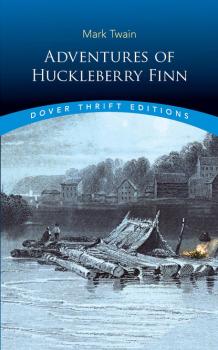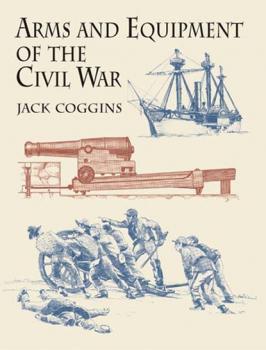Историческая литература
Различные книги в жанре Историческая литератураAdventures of Huckleberry Finn
Referring to Adventures of Huckleberry Finn, H. L. Mencken noted that his discovery of this classic American novel was «the most stupendous event of my whole life»; Ernest Hemingway declared that «all modern American literature stems from this one book,» while T. S. Eliot called Huck «one of the permanent symbolic figures of fiction, not unworthy to take a place with Ulysses, Faust, Don Quixote, Don Juan, Hamlet.»The novel's preeminence derives from its wonderfully imaginative re-creation of boyhood adventures along the Mississippi River, its inspired characterization, the author's remarkable ear for dialogue, and the book's understated development of serious underlying themes: «natural» man versus «civilized» society, the evils of slavery, the innate value and dignity of human beings, and other topics. Most of all, Huckleberry Finn is a wonderful story, filled with high adventure and unforgettable characters.
American Circus Posters
The Children's Dream of Fairy-Land (1893) . . . Living Statues on Horseback (1890s) . . . Real Roman Hippodrome, Five Continent Menagerie (1890s) . . . Uno, Queen Supreme of the Serpent Kingdom (1894) . . . Dancing Girls, Mounted Guards and Truly Lavish Displays (1903) . . . «Twisting Double Somersault,» A Feat Never Before Attempted by the Most Intrepid Aerialists (1904) . . . Desperado's Terrible Leap for Life, A Terrific Descent of 80 Feet Through Space Landing Upon His Chest on a Skid (1909) . . . The Imperial Chinese Circus Stars (1914) . . . An Army of Clowns (1920s) . . . Pallenberg's Wonder Bears (1920s) . . . Gargantua the Great (1938).Originally put in store windows and posted on sheds, barns, buildings, walls and fences, these 18 extremely rare posters, most not previously reproduced, are collected together for the first time. The quality of reproduction is superb: reproduced in full color directly from the originals, these posters have been printed in an extra large format and on coated stock so that every detail is clear. They are an exciting visual history, capturing the pageantry and color that the circus was and is. They are also extremely fine examples of almost 50 years of poster art and American advertising. There are acrobats, elephants, tigers, lions, parades, tents, trains, and many specialized acts: May Wirth, the Riding Rooneys, the Astounding Clarkonians, etc. The posters date from the 1890s to the 1940s, and include one by Norman Bel Geddes. They feature many American circuses: Ringling Bros., Barnum & Bailey, Sells, Sparks, Hagenbeck-Wallace. The historical introduction and captions are by Charles Philip Fox, Director of Research and Development with the Ringling Bros. and Barnum & Bailey Circus.
The Architect, or Practical House Carpenter (1830)
The superbly illustrated and detailed handbook that popularized the use of classic Greek architectural style in America in the early and middle 1800s. 271 illustrations.
Arms and Equipment of the Civil War
The first military conflict to use iron-clad gunboats, metallic cartridges, and submarines, the Civil War also introduced such inventions as the telegraph and military balloon, utilized by the Signal Corps. This comprehensive reference brings a fresh perspective to wartime victories and defeats, with vivid descriptions of how the war was fought and what material was available to armies and navies of the Union and the Confederacy. Profusely illustrated with hundreds of the author's own drawings, Jack Coggins's remarkable encyclopedia of military hardware and technology also describes such equipment as pontoon bridges, corduroy roads, «excelsior» percussion grenades, «freak guns,» siege artillery, mines, and submarine torpedoes. Offering a new view on how military resources decided the outcome not only of battles, but of the war as well, the text also includes on-the-scene comments by Union and Confederate soldiers about equipment and camp life in general. A must-have book for every Civil War enthusiast and for readers interested in the development of weaponry.
American Indian Design and Decoration
The most original and most powerful design art produced in the Western Hemisphere is also its most indigenous: that of the Indian, in innumerable cultures existing from prehistory to the arrival of the white man, reaching from the Arctic Circle to Tierra del Fuego. It owes, of course, nothing to Europe or the classical Orient. It is tremendous in variety, differing region by region, era by era, often tribe by tribe. It is always vigorously distinctive. This book, 20 years in preparation, shows us that art in all its profuse diversity and in the almost numberless crafts for which the American Indian is famous. Well over 700 examples, drawn with painstaking care, are shown: representations of flora and fauna, men and gods, earth and sky; symbols of clan and tribe, religion and magic; formal designs from the primal to the highly intricate. They appear in examples of basketry, weaving, pottery, sculpture, painting, lapidary work, masks, drumheads, weapons, apparel, beadwork, goldwork, blankets, ponchos, and many other forms. The arts and crafts of Inca, Tiahuanaco, Chimú, Maya, Axtec, Zapotec, Totonac, Mixtec, Navaho, Zuni, Hopi, Apache, Cherokee, Creek, Winnebago, Dakota, Blackfoot, Nez Percé, Cheyenne, Crow, Sioux, Cochiti, Haida, Bellacoola, and others known and unknown are here. Each section is preceded by a page of typical motifs of an area, making it easy to isolate the design elements. In addition, the lore and tradition behind the designs are told in a text reproducing the Indians' own stories and songs. Separate indices simplify locating the work of particular tribes and regions. Craftspeople will find in this book a prolific source of timeless, eternally valid design ideas representing years of research in museums all over the hemisphere; for the graphic artist there is a wealth of material than can be adapted directly to his needs. All those interested in the Americans who preceded us on these continents will find this work unique.
Algonquin Legends
This classic collection contains myths, legends, and folklore of the principal Wabanaki, or northeastern Algonquin Indians, i.e. the Passamaquoddies and Penobscots of Maine and the Micmacs of New Brunswick. Most of this material was gathered directly from Indian narrators by Charles G. Leland (1824-1903), a brilliant and gifted Philadelphia-born journalist, essayist, and folklorist.In compiling the work, Leland noted interesting affinities between the myths of the Northeastern tribes and those of the Eskimos, and striking similarities between the myths of the Algonquins and the Eddas, sagas and popular tales of Scandinavia. For example, may of the stories in this book deal with Glooskap, a divinity with strong resemblances to such Norse gods as Thor and Odin. We learn how Glooskap made man from an ash tree, named the animals, gave gifts to men, went to England and France and made America known to the Europeans, and performed many other curious deeds. Here too are the merry tales of Lox, the Mischief-maker, who bears a strong resemblance to Loki of Scandinavian mythology. Also included are the amazing adventures of Master Rabbit, the Chenoo legends, stories of At-o-sis the serpent, the story of the Three Strong Men, the Weewillmekq', tales of magic, and more.Myths and legends provide unique and authentic sources of knowledge about our deepest instincts and ways of interpreting the world and our place in it. This volume remains one of the most powerful and revealing studies of the Algonquin versions of such myths, a thorough, comprehensive collection that will prove invaluable to any student of American Indian culture or myth, folklore, and religion. General readers will also find these tales highly readable and delightfully entertaining.
Old English Cuts and Illustrations
A rich source of striking imagery, this compilation of 163 black-and-white prints was reproduced from a rare collection of 18th-century broadsides. Illustrations include folkloric characters (Peggy Bacon-face, Bet Boozer, Sir John Falstaff) as well as animals, ships, soldiers, traditional English heroes and members of the royal family, and other distinctive graphics.
Narratives of the New England Witchcraft Cases
A rising tide of witchcraft hysteria overwhelmed the sober Puritan communities of 17th-century New England, culminating in the notorious Salem witch trials of 1692. Rooted in religious zealotry as well as political friction and property disputes, the witch-hunts ranged beyond the gallows to ruin countless innocent lives. Voices from both sides of the controversy can be heard within this compilation of revealing documents from one of American history’s darkest eras.Assembled by a distinguished historian, this volume comprises 13 original narratives by judges, ministers, government officials, and others involved in the trials and persecution of the accused. Many firsthand reports from the men and women charged with sorcery appear here, along with accounts of the evidence against them, tests for witchcraft, trials and executions, and much more. Written by such famous figures as Increase and Cotton Mather (and featuring the first publication of the latter's «A Brand Pluck'd Out of the Burning»), the narratives include «Lithobolia, or the Stone-Throwing Devil,» by Richard Chamberlain (1698); «Memorable Providences, Relating to Witchcrafts and Possessions,» by Cotton Mather (1689); «A Brief and True Narrative of Witchcraft at Salem Village,» by Deodat Lawson (1692); «A Modest Inquiry into the Nature of Witchcraft,» by John Hale (1702); and more.A peerless source of firsthand information, this compilation offers a superb resource to anyone interested in the belief in witchcraft and its effect on colonial America.
The American Song Treasury
". . . besides innumerable good old tunes running in our heads, [there's] a sense of having actually lived in the years [covered by] this book." — The International MusicianMusic has always played an important part in American life–from the hymns sung in colonial days, to partisan songs that supported independence, and war songs that boosted morale. Immigration, westward movement and industrialization all helped contribute to America's musical archives. This outstanding collection of 100 all-time favorite songs offers an unbeatable combination: the music and lyrics of well-known tunes in easy-to-sing keys, together with equally entertaining background information on each song. Assembled by noted composer, arranger and musical director Theodore Raph, this impressive volume spans 300 years–from the haunting strains of Greensleeves to songs that reached new peaks of popularity in the 1950s (He's Got the Whole World in His Hand).Perfect for party sing-alongs or for one's own enjoyment, these appealing songs all made past his parades. Yankee Doodle was «on the charts» during the Revolutionary War; Clementine and Sweet Betsy from Pike were widely hummed, sung, whistled and played in the mid-nineteenth century. She'll Be Comin' Round the Mountain and Wabash Cannonball heralded the era of transcontinental railroad construction; and regional songs such as My Old Kentucky Home, On the Banks of the Wabash, and Home on the Range became nationwide favorites.Easy-to-play piano accompaniments, guitar chords and complete lyrics make these familiar melodies ideal ice-breakers on picnics, boating excursions, camping trips and a host of other group activities. Because they're in the public domain, these tunes are also desirable for professional and commercial use. (No permission or royalty payments necessary!) Singers, pianists, students, teachers — songsters at all levels of expertise — will be delighted with these musical moments from bygone eras.
The Story of the Lewis and Clark Expedition
Much of the history of the great American Northwest begins with the story of the 1800s Lewis and Clark expedition. This concise narrative, based on authentic records, follows the group through Indian territory, the valleys of the Upper Missouri, the Yellowstone, and the Columbia rivers, the Great Divide, and the Pacific slope.









